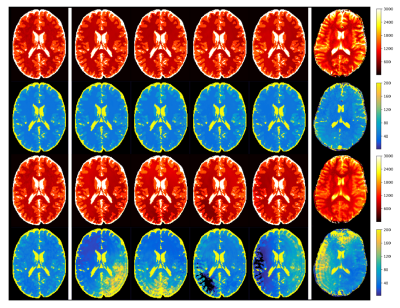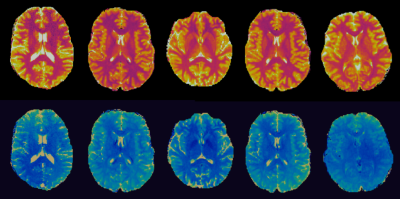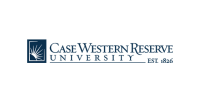Siyuan Hu1, Ignacio Rozada2, Rasim Boyacioglu3, Stephen Jordan4, Sherry Huang3, Matthias Troyer4, Mark Griswold3, Debra McGivney3, and Dan Ma3
1Biomedical Engineering, Case Western Reserve University, Cleveland, OH, United States, 21Qbit, Vancouver, BC, Canada, 3Case Western Reserve University, Cleveland, OH, United States, 4Microsoft, Redmond, WA, United States
1Biomedical Engineering, Case Western Reserve University, Cleveland, OH, United States, 21Qbit, Vancouver, BC, Canada, 3Case Western Reserve University, Cleveland, OH, United States, 4Microsoft, Redmond, WA, United States
An advanced MR Fingerprinting optimization framework is proposed to provide accelerated MRF scans that are robust to undersampling and system imperfections, and outperform the human-designed sequence on the tradeoff between duration and measurement precision.

Figure 2: T1 map (red) and T2 map (blue) of an optimized
sequence (top two rows) and the truncated human-designed sequence (bottom two
rows). The leftmost four columns are simulations that contain undersampling and
the background phase variations in 4 different possible directions. The
rightmost column shows the maps from an actual in vivo scan using the
corresponding sequences. The simulated and in vivo maps from the human-designed
sequence yield apparent shading artifacts, but the maps from the optimized
sequences are not affected.

